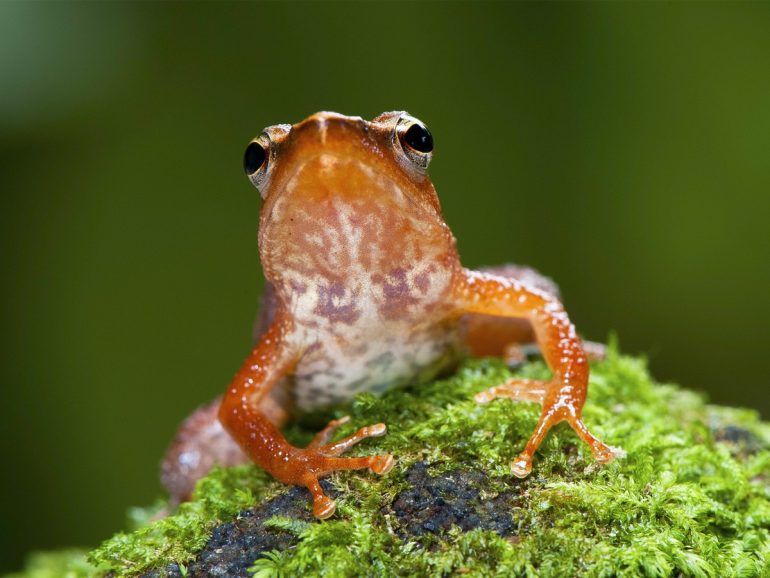It must be summertime, the season of outdoor dance parties and cookouts, because I just cannot get enough of dancing—and, more specifically, dancing animals. I’m not the only one, either. Recently, the reptile and amphibian world was rocked by the discovery of a record fourteen new species of frog. Herpetologists first broke the news in Kerala, the state in southern India where my dad’s family is from. This region is a biodiversity hotspot, meaning many of its flora and fauna aren’t found anywhere else in the world. All fourteen of the new frogs belong to the genus Micrixalus, and herpetologists have named them “dancing frogs.”
When I say this, perhaps, you might think of the delightfully named Michigan J. Frog from the old Looney Tunes cartoons. Michigan J. wore a top hat and carried a cane, sang “Hello! Ma Baby,” and only danced when people weren’t watching. And boy did he ever dance— kicking that leg out with more vim and vigor than any can-can girl. Only male dancing frogs, like Michigan J., exhibit this unusual behavior. The larger the frog, the more frequently they “dance.” It’s a way of courting and it’s also a defensive “stand back, this lady is spoken for” sign, which is needed on the jungle’s dance floor, where males often outnumber females a hundred to one. A frog begins by taking his place on top of a wet rock near a cool stream and stretching back one leg at a time. When the leg is fully extended, he spreads his toes as wide as possible, like opening an umbrella, with the webbing between each stretched as far as it can go—a semaphore to tell other male frogs Go away! but at the same time says to females, Hey! Come join the party!
A dancing frog is about the size of a golf ball and is super sensitive to rainfall patterns and stream levels because of its precise requirements for breeding. After the male and female have met, she begins her version of dancing: digging her back feet through pebbles and soil to make a bowl for her eggs. Most often she’ll find a spot in a stream where the water just barely covers the rock beds. Too much water, and the dancing frogs might get swept into the current when they try to lay eggs. Too little water, and the eggs won’t even touch the streambed, meaning almost certain death for her eggs if they dry out completely. After the egg laying is complete, the female shrugs off the mate she’s been carrying on her back. He is then free to find another wet rock on which to shimmy and kick the evening away, accompanied by a gurgle of freshwater—a xylophone of accompaniment for this performance.
But alas, the herpetologists’ celebrations at their discovery were short-lived. The dancing frogs have already been classified as endangered, due to erratic monsoon patterns in the shola forests of this usually lush and green area of India. Record temperatures have been drying out their habitat, so scientists petitioned the government to protect this relatively small area from deforestation and encroaching pollution. Many herpetologists fear “unnamed extinctions,” meaning that more kinds of dancing frogs might become extinct before they’ve even had a chance to be discovered. And to lose them would be no small disaster—we’d lose their unique connections to eighty-five million years of evolutionary history.
I know that’s a sobering thought. But! We have to remember that in a time of so many extinctions, to find fourteen (fourteen!) new species of frog is a small ray of hope. Frogs are the great bioindicators of this planet— meaning the health of dancing frogs is indicative of the health of the biosphere itself. That’s a bit of promising news to come out of one of the most gorgeous places on earth, where the cool streams flow along the base of the Ghat mountain range in southwestern India. And for now, I’m just so tickled to know these little ones exist, foot-flagging on a shade-cooled rock, tapping their way together toward a rush of pebble, water, wind.





